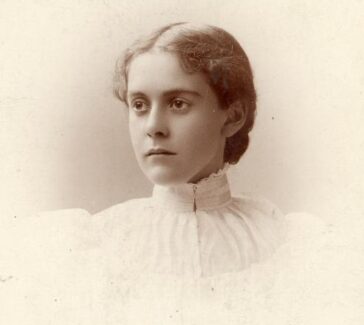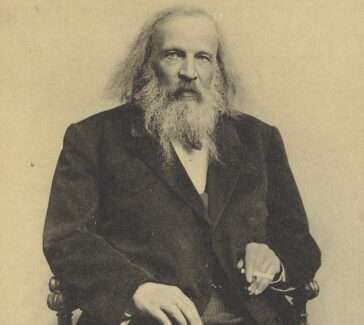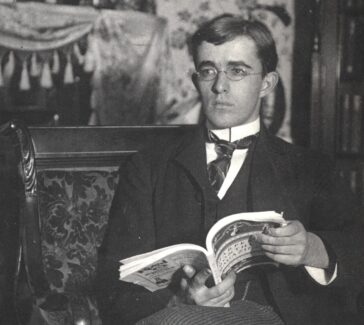Helen M. Free and Alfred Free
The Frees revolutionized diagnostic urine testing with their invention of a chemically coated paper dipstick.
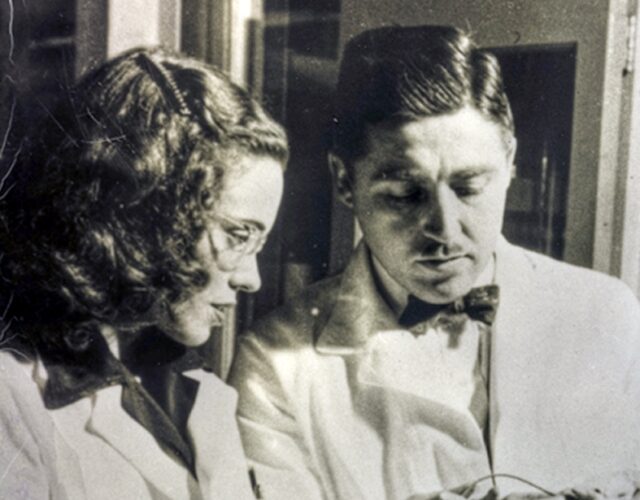
A husband-and-wife team of biochemists revolutionized diagnostic urine testing with their invention of an easy-to-use, chemically coated paper dipstick that measures a patient’s blood sugar by changing color when dipped in a urine sample.
Helen M. Free (1923–2021) was born in Pittsburgh, Pennsylvania, the daughter of James S. Murray, a coal-company salesman, and Daisy Piper Murray, who died in an influenza epidemic when Helen was six. She received her early education in the public schools of Youngstown, Ohio, and graduated from a small high school in Poland, a Youngstown suburb.
After attending a summer church camp at the nearby College of Wooster, Helen set her heart on attending the college. She chose to major in English, with the intention of becoming an English teacher and a Latin teacher, and arrived on the Wooster campus in September 1941.
When six months later the male student population started to decline as young men went off to fight in World War II, the housemother at her dorm advised some of her young charges to go into science, a predominantly male discipline, to fill the void. Helen liked her chemistry course and was getting good grades, so she switched majors to chemistry.
Looking for Something More
At the end of her senior year she interviewed at the Koppers Chemical Company in nearby Orrville, Ohio. When told that her role would be to test the creosote that fence posts were dipped in before being sold to local farms, she decided there must be something more challenging. She applied for a research fellowship at the Mellon Institute (now Carnegie Mellon University) in Pittsburgh, where she still had a lot of relatives.
While waiting to hear from Mellon, one of her chemistry professors arranged for her to have an interview at Miles Laboratories (now part of Bayer) in Elkhart, Indiana. Miles was known for its main consumer product, Alka-Seltzer, and for its sponsorship of such radio programs as One Man’s Family and Quiz Kids.
Helen met with the head of the control laboratory at Miles. Afterward he and several other men dropped her off at the YWCA on their way to lunch; she was not invited, since they were headed to Elkhart’s all-male “Friday Club.” Free was nevertheless offered a position in the control lab, testing the quality of ingredients for the firm’s line of vitamins.
Deciding that she would much rather work in research than in quality control, she waited, without success, to hear from the Mellon Institute. Finally, she accepted the Miles offer, beginning work a few days after her graduation from the College of Wooster in May 1944. An offer from Mellon came just a few weeks later, but by then it was too late, and her unplanned career path had been fixed.
Undeniable Chemistry
The postwar expansion of research at Miles Laboratories brought in a number of new people, including biochemist Alfred Free (1913–2000). Helen was still itching to do research, so when a position opened with Alfred and his biochemistry research group, she asked for an interview. Not only did she get the job, but two years she and Alfred were married. The two became lifelong research partners.
Alfred graduated with a bachelor’s degree in chemistry from Miami University in Ohio. With a clear career track in mind, he proceeded to Western (now Case Western) Reserve University in Cleveland for master’s and doctoral degrees in biochemistry. Before arriving at Miles he served as a research assistant at the Cleveland Clinic, in various teaching positions at Western Reserve, and as a consultant to BenVenue Laboratories, a producer of human blood plasma and penicillin during World War II.
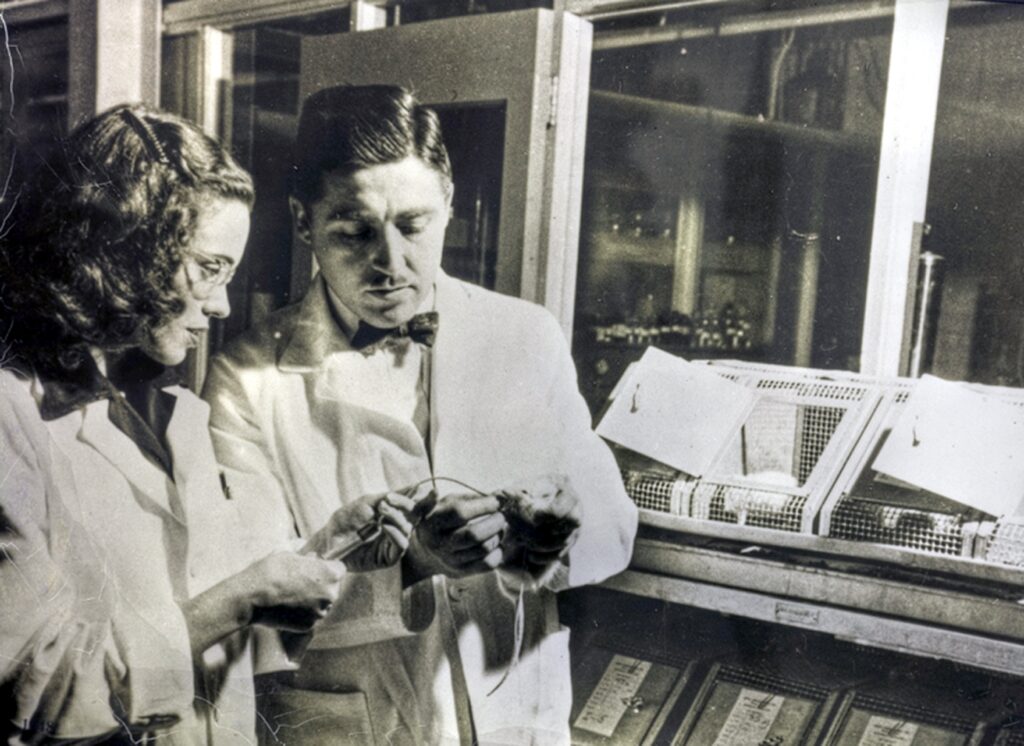
The Free Research Group at Miles
One of the early projects of the Free research group was Clinitest, a tablet for testing the level of glucose in the urine of diabetes patients. Miles had previously developed the tablet, but the Frees and their colleagues were asked to make it more sensitive.
Clinitest contained cupric sulfate, citric acid, sodium hydroxide, and—because it came from the producer of Alka-Seltzer—a little bit of carbonate to make it “fizz.” The amount of glucose was determined from the color change when the tablet was placed in a small test tube with a dilute urine solution.
It was the first diagnostic test of its kind: it could be done in a doctor’s office or a hospital without elaborate laboratory facilities. Much later it was realized that the test was simple enough to allow patients to do their own monitoring at home. The group also developed a second test for diabetics, a tablet called Acetest.
In keeping with the pattern of turning clinical tests into tablets, the Frees also developed Icotest, for diagnosing hepatitis A. It worked by chemically detecting the presence of a substance called bilirubin in urine, a symptom of the disease.
The “Dip-and-Read” Test
During the development of Ictotest, Alfred remarked that there might a better way to conduct these types of diagnostic tests, one even more convenient than tablets. He came up with the idea of a dipstick, or urine test strip—a strip of paper coated with a chemical that turns color in the presence of a particular chemical substance in urine. The Frees developed Clinistix for Miles, the now ubiquitous “dip-and-read” test for glucose in urine. Helen and Alfred went beyond testing for glucose and developed other strips for testing levels of key indicators of disease. Once they achieved success with a number of different test strips, they turned their attention to combining more than one test on a single strip. By 1981 they had developed Multistix, a strip for urinalysis that had 10 different clinical tests on a single strip. Their inventions revolutionized diagnostic urine testing.
Beyond the Lab
Over time Alfred rose to head the research laboratory at Miles and in 1972 became vice president for technical services and scientific relations. The Frees both retired in 1982, but through 2007 Helen served as a consultant to what is now Bayer Diagnostics. In her retirement she became a champion for science education and outreach, chairing the National Chemistry Week task force of the American Chemical Society (ACS) for five years. In 1993 she was elected president of the ACS. As president, Free considered her top priority to be raising public awareness of the positive role chemistry has played in our lives. The ACS named an award in her honor, the Helen M. Free Award in Public Outreach.
She and her husband hold several patents and coauthored two books on urinalysis. She received the ACS’s Garvan Medal, honoring distinguished service to chemistry by a woman, in 1980. The Frees were inducted into the National Inventors Hall of Fame in 2000 shortly after Alfred’s death.

